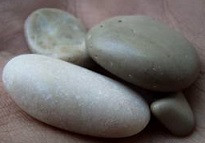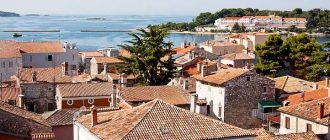Croatian limestone is known as the best in the world. It is used in buildings all over the world. To learn more about working with limestone from Croatia read our guide for facts & information…
Next time you visit Washington D.C. and gawk at the White House with its imposing beautiful white columns, remember; those columns came all the way from Croatia. Why Croatia? Well because Croatian limestone is the fine wine of the building industry, literally the gold standard.
Geomorphology of Croatia
The reason is that Croatia is blessed by nature; it is built on limestone rock. This rock formation also called as Karst, extends over 100 km of the North Sea Coast and forms a beautiful surreal barren landscape. At other places, the rock formation has given rise to sheer cliffs, waterfalls, and caves that are a ‘must visit’ sight on a trip to Croatia. In fact, Karst makes up over fifty percent of Croatia’s land mass.
Uniqueness of Croatian Limestone
Why is this rock formation so prized? It is because limestone is basically a sedimentary rock formed by compression of sand, shale and shells of marine animals over millions of years that makes it porous, soft and easy to carve. The variety in Croatia, in addition, is harder and heavier than the same variety of rock formations found elsewhere in the world.
Famous Historical Landmarks Connected with Croatian Limestone
The quality of Croatia’s limestone is renowned from ancient times because this is the only place where you can get ebony white pure limestone that can be grinded and shaped to give a beautiful white finish that stands for an eternity. Right from ancient Roman times, this natural bounty has been cherished and used in the great architectural wonders that Rome is known for. In a sense, Venice owes its existence to Croatia because the city’s foundations were built out of; you guessed it right – Croatian limestone.
Croatian Limestone Tourist Attractions
The rock formation is also the bedrock for the Plitvice Lakes National Park, where the limestone bed has been carved by nature to give rise to lovely lakes filled with brilliant water colored azure, green or gray that cascades from one lake to another like a modern day Garden of Eden. There are a total of 16 lakes, small rivers, and streams at Plitvice Lakes National Park, which has been declared as a world heritage site by the UNESCO. The national park is a major tourist attraction not only for its lovely waterfalls but also for its breathtaking caves where you can see stalactites and stalagmites forming natural sculptures. All over Croatia there are over 49 limestone caves that plummet to the depth of over 3000 ft below sea level! So all cave crawlers of the world, unite, and pay a visit to Croatia’s cave wonders. The famous fortifications of Drubnovik are built out of limestone and almost the whole city is carved out of this rock. The medieval architecture of Dubrovnik is a marvel and the best preserved such site throughout Europe that has also been designated as a UNESCO world heritage site. The view of the walls of Drubnovik is simply breathtaking and no amount of description and still photography can convey the sheer experience of actually being there.
Croatian limestone therefore is not just a rock formation but a way of life, which must be experienced.





